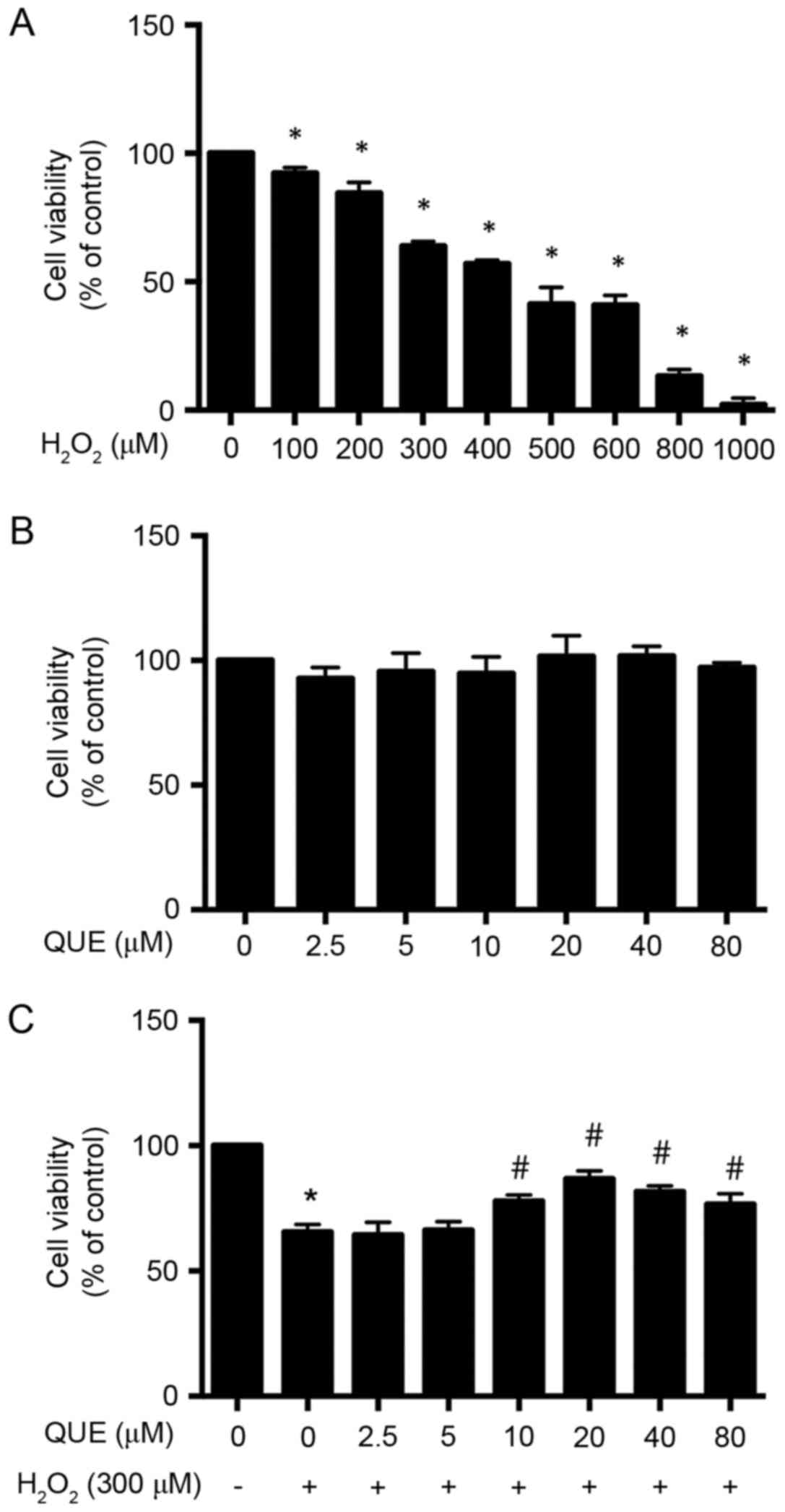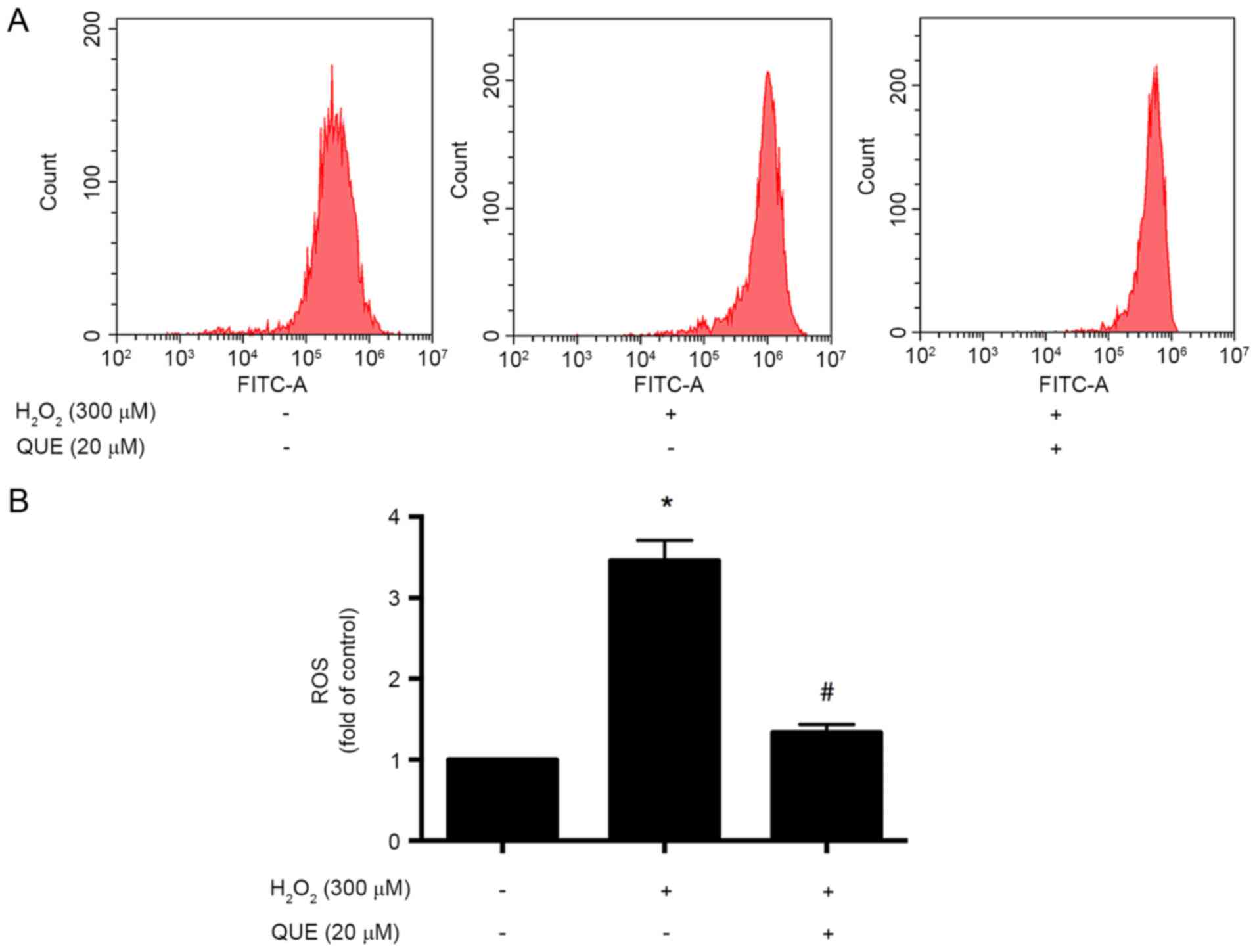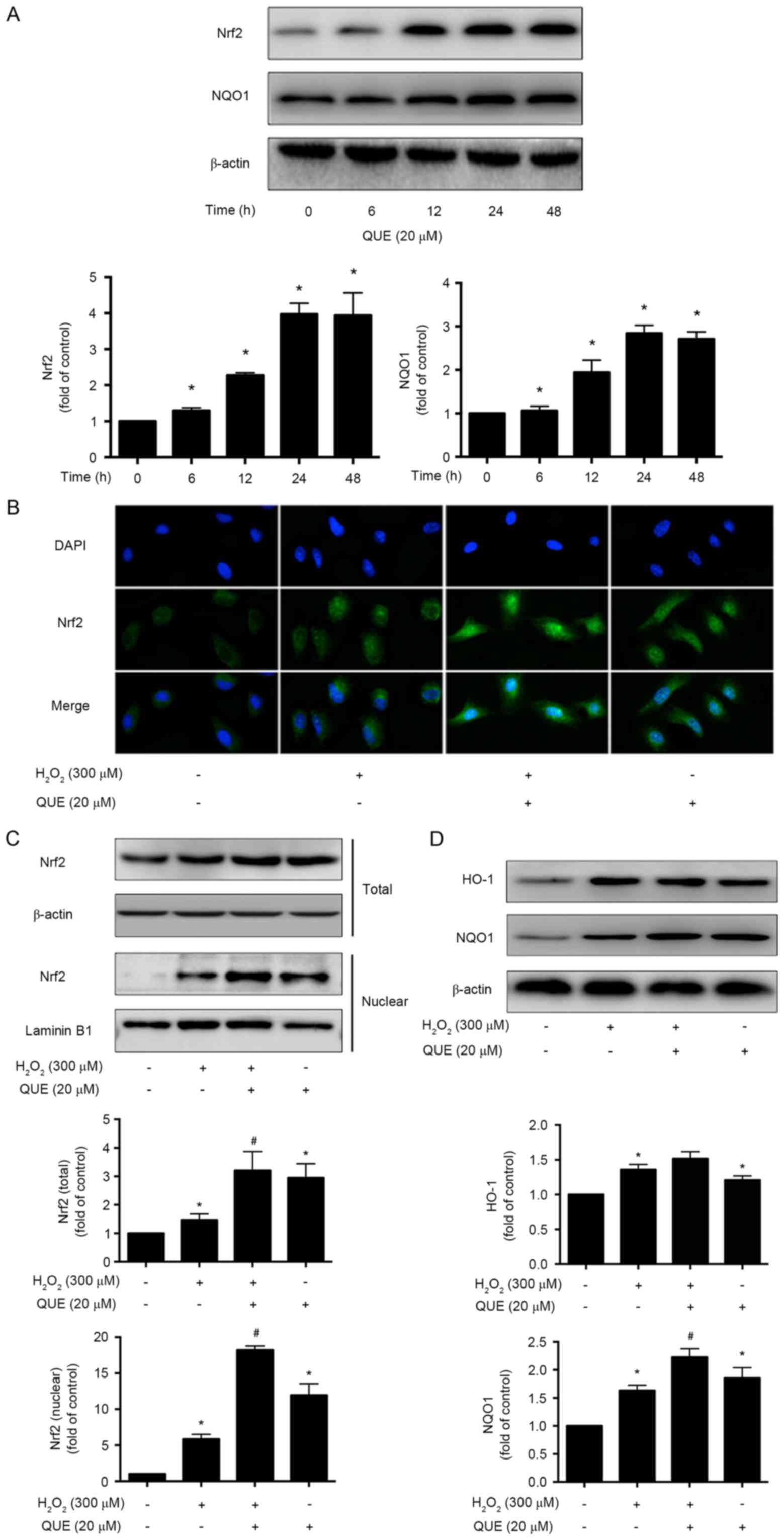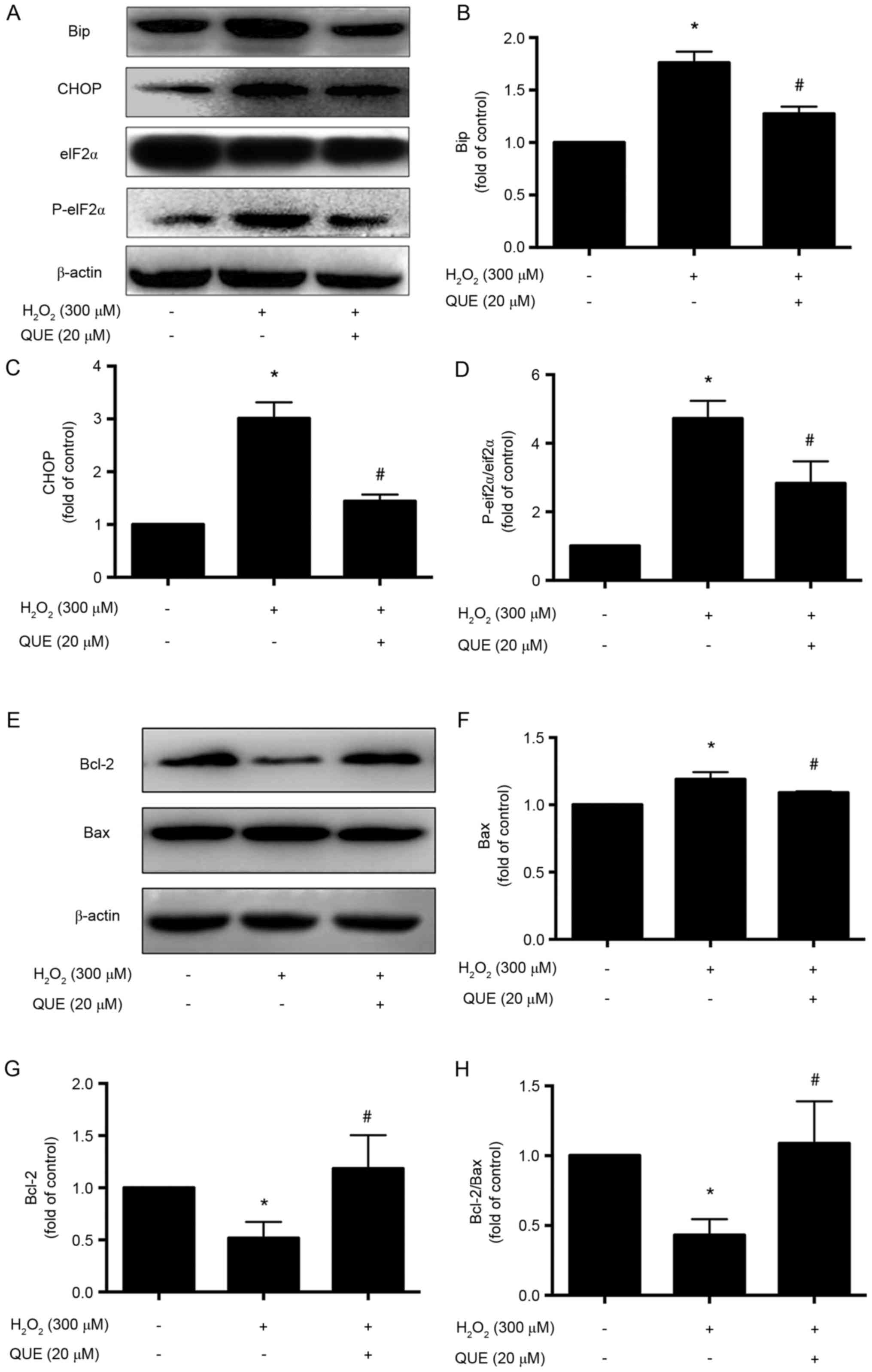|
1
|
Friedman DS, O'Colmain BJ, Muñoz B, Tomany
SC, McCarty C, de Jong PT, Nemesure B, Mitchell P, Kempen J, et al:
Eye Diseases Prevalence Research Group: Prevalence of age-related
macular degeneration in the United States. Arch Ophthalmol.
122:564–572. 2004. View Article : Google Scholar : PubMed/NCBI
|
|
2
|
van Lookeren Campagne M, LeCouter J,
Yaspan BL and Ye W: Mechanisms of age-related macular degeneration
and therapeutic opportunities. J Pathol. 232:151–164. 2014.
View Article : Google Scholar : PubMed/NCBI
|
|
3
|
Blasiak J, Petrovski G, Vereb Z, Facskó A
and Kaarniranta K: Oxidative stress, hypoxia and autophagy in the
neovascular processes of age-related macular degeneration. Biomed
Res Int. 2014:7680262014. View Article : Google Scholar : PubMed/NCBI
|
|
4
|
Plafker SM, O'Mealey GB and Szweda LI:
Mechanisms for countering oxidative stress and damage in retinal
pigment epithelium. Int Rev Cell Mol Biol. 298:135–177. 2012.
View Article : Google Scholar : PubMed/NCBI
|
|
5
|
Zhang Q, Pi J, Woods CG and Andersen ME: A
systems biology perspective on Nrf2-mediated antioxidant response.
Toxicol Appl Pharmacol. 244:84–97. 2010. View Article : Google Scholar : PubMed/NCBI
|
|
6
|
Gao X and Talalay P: Induction of phase 2
genes by sulforaphane protects retinal pigment epithelial cells
against photooxidative damage. Proc Natl Acad Sci USA.
101:10446–10451. 2004. View Article : Google Scholar : PubMed/NCBI
|
|
7
|
Li Z, Dong X, Liu H, Chen X, Shi H, Fan Y,
Hou D and Zhang X: Astaxanthin protects ARPE-19 cells from
oxidative stress via upregulation of Nrf2-regulated phase II
enzymes through activation of PI3K/Akt. Mol Vis. 19:1656–1666.
2013.PubMed/NCBI
|
|
8
|
Sachdeva MM, Cano M and Handa JT: Nrf2
signaling is impaired in the aging RPE given an oxidative insult.
Exp Eye Res. 119:111–114. 2014. View Article : Google Scholar : PubMed/NCBI
|
|
9
|
Dandekar A, Mendez R and Zhang K: Cross
talk between ER stress, oxidative stress, and inflammation in
health and disease. Methods Mol Biol. 1292:205–214. 2015.
View Article : Google Scholar : PubMed/NCBI
|
|
10
|
Libby RT and Gould DB: Endoplasmic
reticulum stress as a primary pathogenic mechanism leading to
age-related macular degeneration. Adv Exp Med Biol. 664:403–409.
2010. View Article : Google Scholar : PubMed/NCBI
|
|
11
|
Zhao Z, Sun T, Jiang Y, Wu L, Cai X and
Sun X and Sun X: Photooxidative damage in retinal pigment
epithelial cells via GRP78 and the protective role of grape skin
polyphenols. Food Chem Toxicol. 74:216–224. 2014. View Article : Google Scholar : PubMed/NCBI
|
|
12
|
D'Andrea G: Quercetin: A flavonol with
multifaceted therapeutic applications? Fitoterapia. 106:256–271.
2015. View Article : Google Scholar : PubMed/NCBI
|
|
13
|
Kobylinska A and Janas KM:
Health-promoting effect of quercetin in human diet. Postepy Hig Med
Dosw (Online). 69:51–62. 2015.(In Polish). View Article : Google Scholar : PubMed/NCBI
|
|
14
|
Kook D, Wolf AH, Yu AL, Neubauer AS,
Priglinger SG, Kampik A and Welge-Lüssen UC: The protective effect
of quercetin against oxidative stress in the human RPE in vitro.
Invest Ophthalmol Vis Sci. 49:1712–1720. 2008. View Article : Google Scholar : PubMed/NCBI
|
|
15
|
Kaspar JW, Niture SK and Jaiswal AK:
Nrf2:INrf2 (Keap1) signaling in oxidative stress. Free Radic Biol
Med. 47:1304–1309. 2009. View Article : Google Scholar : PubMed/NCBI
|
|
16
|
Tanigawa S, Fujii M and Hou DX: Action of
Nrf2 and Keap1 in ARE-mediated NQO1 expression by quercetin. Free
Radic Biol Med. 42:1690–1703. 2007. View Article : Google Scholar : PubMed/NCBI
|
|
17
|
He S, Yaung J, Kim YH, Barron E, Ryan SJ
and Hinton DR: Endoplasmic reticulum stress induced by oxidative
stress in retinal pigment epithelial cells. Graefes Arch Clin Exp
Ophthalmol. 246:677–683. 2008. View Article : Google Scholar : PubMed/NCBI
|
|
18
|
Feng J, Chen X and Sun X, Wang F and Sun
X: Expression of endoplasmic reticulum stress markers GRP78 and
CHOP induced by oxidative stress in blue light-mediated damage of
A2E-containing retinal pigment epithelium cells. Ophthalmic Res.
52:224–233. 2014. View Article : Google Scholar : PubMed/NCBI
|
|
19
|
Huang C, Wang JJ, Ma JH, Jin C, Yu Q and
Zhang SX: Activation of the UPR protects against cigarette
smoke-induced RPE apoptosis through up-regulation of Nrf2. J Biol
Chem. 290:5367–5380. 2015. View Article : Google Scholar : PubMed/NCBI
|
|
20
|
Jiang ZQ, Ma YX, Li MH, Zhan XQ, Zhang X
and Wang MY: 5-Hydroxymethylfurfural protects against ER
stress-induced apoptosis in GalN/TNF-α-injured L02 hepatocytes
through regulating the PERK-eIF2α signaling pathway. Chin J Nat
Med. 13:896–905. 2015.PubMed/NCBI
|
|
21
|
Hayakawa M, Itoh M, Ohta K, Li S, Ueda M,
Wang MX, Nishida E, Islam S, Suzuki C, Ohzawa K, et al: Quercetin
reduces eIF2α phosphorylation by GADD34 induction. Neurobiol Aging.
36:2509–2518. 2015. View Article : Google Scholar : PubMed/NCBI
|
|
22
|
Zheng JH, Follis A Viacava, Kriwacki RW
and Moldoveanu T: Discoveries and controversies in BCL-2
protein-mediated apoptosis. FEBS J. 283:2690–7000. 2016. View Article : Google Scholar : PubMed/NCBI
|
|
23
|
Suematsu N, Hosoda M and Fujimori K:
Protective effects of quercetin against hydrogen peroxide-induced
apoptosis in human neuronal SH-SY5Y cells. Neurosci Lett.
504:223–227. 2011. View Article : Google Scholar : PubMed/NCBI
|
|
24
|
Wang XQ, Yao RQ, Liu X, Huang JJ, Qi DS
and Yang LH: Quercetin protects oligodendrocyte precursor cells
from oxygen/glucose deprivation injury in vitro via the activation
of the PI3K/Akt signaling pathway. Brain Res Bull. 86:277–284.
2011. View Article : Google Scholar : PubMed/NCBI
|
|
25
|
Liu K, Shi Y, Guo X, Wang S, Ouyang Y, Hao
M, Liu D, Qiao L, Li N, Zheng J and Chen D: CHOP mediates
ASPP2-induced autophagic apoptosis in hepatoma cells by releasing
Beclin-1 from Bcl-2 and inducing nuclear translocation of Bcl-2.
Cell Death Dis. 5:e13232014. View Article : Google Scholar : PubMed/NCBI
|
|
26
|
Primikyri A, Chatziathanasiadou MV, Karali
E, Kostaras E, Mantzaris MD, Hatzimichael E, Shin JS, Chi SW,
Briasoulis E, Kolettas E, et al: Direct binding of Bcl-2 family
proteins by quercetin triggers its pro-apoptotic activity. ACS Chem
Biol. 9:2737–2741. 2014. View Article : Google Scholar : PubMed/NCBI
|
|
27
|
Xu XR, Yu HT, Yang Y, Hang L, Yang XW and
Ding SH: Quercetin phospholipid complex significantly protects
against oxidative injury in ARPE-19 cells associated with
activation of Nrf2 pathway. Eur J Pharmacol. 770:1–8. 2016.
View Article : Google Scholar : PubMed/NCBI
|
|
28
|
Zhu X, Li N, Wang Y, Ding L, Chen H, Yu Y
and Shi X: Protective effects of quercetin on UVB
irradiation-induced cytotoxicity through ROS clearance in
keratinocyte cells. Oncol Rep. 37:209–218. 2017.PubMed/NCBI
|
|
29
|
Kook D, Wolf AH, Yu AL, Neubauer AS,
Priglinger SG, Kampik A and Welge-Lüssen UC: The protective effect
of quercetin against oxidative stress in the human RPE in vitro.
Invest Ophthalmol Vis Sci. 49:1712–1720. 2008. View Article : Google Scholar : PubMed/NCBI
|













